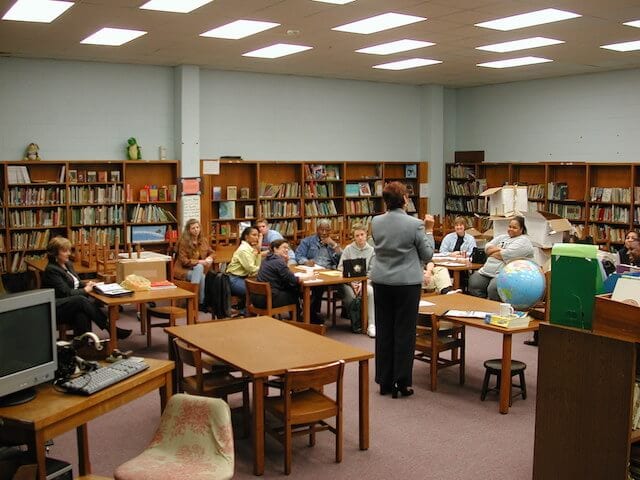by Mike Anderson
“I went to a workshop on active learning, and we just sat and listened all day!”
“I attended a ‘differentiated instruction’ seminar, and we all did the same thing at the same time!”
“Why can’t we ever get professional development days that actually use good instructional practices?”
T hese kinds of comments, all too commonly voiced by teachers, underscore one of the greatest frustrations teachers have with professional development. Often, professional development that claims to be all about great teaching and learning doesn’t employ the very strategies it claims to promote. This can have some significant negative impacts. Teachers may question the value of the strategies being taught, feel devalued themselves, and quickly shut down. It doesn’t take long in a PD setting like this before teachers display all of the typical characteristics of disengaged learners: texting, playing games on their phones, having side conversations, and even being actively disruptive.
So, perhaps you’re a teacher leader or administrator who will be leading professional development for colleagues. Or, perhaps you are looking to hire a consultant to lead adult learning in your school or district. What are some key elements of effective professional development? Not surprisingly, they are the same kinds of qualities we hope to see employed in classrooms with students. If you are leading professional development yourself, consider how these elements might strengthen your work. If you are bringing in an outside consultant, you might ask questions about these elements.
Active and Interactive Learning
Professional development should involve lots of active participation. Teachers should spend at least as much time interacting with each other, or actively engaged in work, as they spend listening to a presenter. They might read an article or watch a short video and discuss in a small group, brainstorm ideas and then get up and share ideas with others, or even simply have a partner chat with a colleague after a short presentation. It should be remembered that whoever is doing the talking and the moving is doing the learning. Make sure the facilitator isn’t the one doing all of the learning.
Practice What Is Preached
Is the experience about differentiation? Then make sure to offer differentiated options for teachers. Is the workshop about choice? Make sure to give choices about learning as a part of the experience. Is the experience about hands-on science? Make sure to get supplies and materials into the hands of teachers so they can try them out. And, just like when using these practices with students, the purpose must be clear. Practices will feel gimmicky and shallow if used in ways that don’t actually help facilitate learning.
Effective Management
Perhaps one of the reasons that sit-and-git professional development is still the norm is that active and interactive learning is more challenging to facilitate. It requires structures and management practices to help the group work effectively. How will people ask questions? How will the group come back together after an active experience? What materials are needed, and what’s an efficient way of distributing those when they’re needed? Taking care of logistics and setting adults up for success with details helps them focus on the learning at hand while also demonstrating effective management of interactive learning they can use with their students.
A Safe and Supportive Environment
Perhaps most importantly, great learning happens within the context of emotional safety. Adults (just like students) who feel threatened, patronized, dismissed, or left out will shut down. Especially when the professional development is about a controversial issue or suggests a change in practice that may elicit defensiveness, particular care and caution should be taken by the facilitator. A tone of empathy and support will help adult learners stay emotionally open so that new learning is possible.
Clearly, this is not an exhaustive list, and there are many other qualities we might look for in effective professional development. Perhaps there’s one final question we might ask to help us get going in the right direction: “What would an ideal classroom look like—one where students are engaged and learning?” When we can provide teachers with professional development that mirrors the best kinds of learning experiences we hope to provide for our students, then we know that it is time well spent.
The opinions expressed here are solely those of Mike Anderson.
Mike Anderson is an award-winning educator (National Milken Educator Award and New Hampshire Teacher of the Year finalist) and author of many books about great teaching and learning (including The Well-Balanced Teacher and The First Six Weeks of School, 2nd Edition). After 15 years as a classroom teacher and over 6 years as a consultant for a non-profit educational organization, Mike is now working as an independent consultant. To learn more about Mike and his work visit his website.
